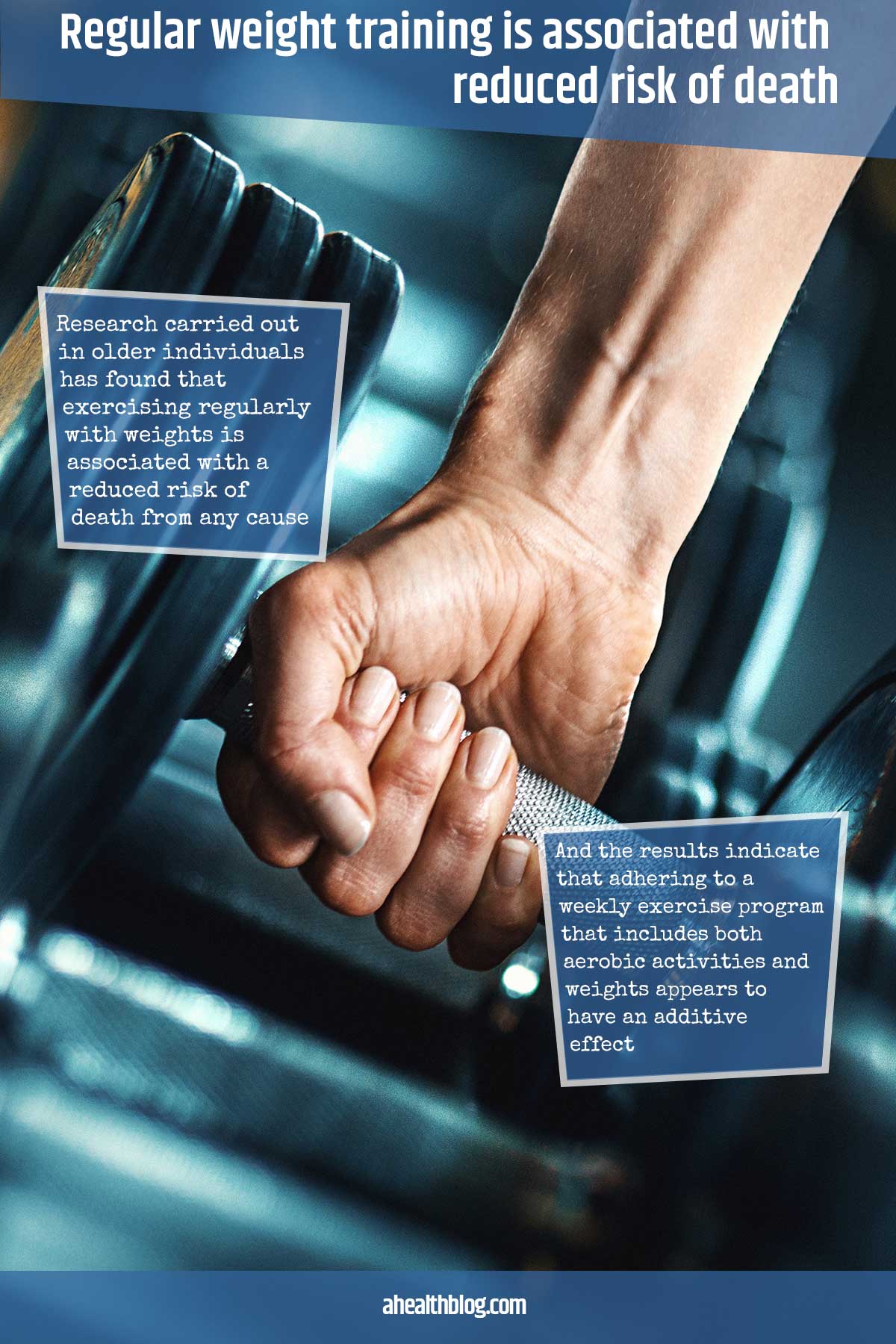Research carried out in older individuals has found that exercising regularly with weights is associated with a reduced risk of death from any cause, except for cancer.1✅ JOURNAL REFERENCE
DOI: 10.1136/bjsports-2021-105315
And the results indicate that adhering to a weekly exercise program that includes both aerobic activities and weights appears to have an additive effect.
Current guidelines on physical activity for all individuals recommend a minimum of 150 minutes of aerobic activity of moderate-intensity every week, or a minimum of 75 minutes of aerobic activity of vigorous-intensity, or an equal combination of the 2, usually known as moderate to vigorous physical activity.
All individuals are also recommended to include activities that work all the main muscle groups. Although aerobic exercise has consistently been linked to a reduced risk of death, it’s unclear if exercising with weights could have similar effects.
The researchers looked at the potential impact of exercising with aerobic activities and weights separately and jointly on the risk of death in older individuals.
They used data from the PLCO Cancer Screening Trial which included 154,897 participants between the ages of 55 and 74. of which 104,002 of them reported if and how often they had engaged in any weight exercises within the last year.
The participants also reported the duration and frequency of both moderate-intensity and vigorous-intensity physical activity during the last year.
Moderate intensity activity was referred to as ‘activity that resulted in a light sweat or heart rate and breathing was moderately increased’, and vigorous activity was referred to as ‘activity strenuous enough to result in a sweat or heart rate and breathing was increased to very high levels’.
Four groups of activity were created according to total minutes of moderate to vigorous physical activity every week:
- The first group was inactive, or 0 minutes.
- The second group had insufficient aerobic moderate to vigorous physical activity, or 1 to 149 minutes.
- The third group had sufficient, or 150 or more minutes of moderate activity, or an equal vigorous activity amount.
- The fourth group was highly active, with 301 or more minutes of moderate activity, or an equal vigorous activity amount.
Overall, the final analysis included the responses of 99,713 individuals, of whom 28,477 died over 9½ years of monitoring on average. Their average age at the outset of the monitoring period was 71, and the average BMI was 27.8 kg/m2 which is categorized as overweight.
Almost 1 in 4 participants documented some weightlifting activity; 16% reported exercising regularly with weights between 1 and 6 times a week. Almost a third were adequately aerobically active, either meeting or exceeding the moderate to vigorous physical activity guidelines.
Exercising with weights and aerobic moderate to vigorous physical activity were both independently linked to a reduced risk of death from any cause, and also from cardiovascular disease, although not from cancer.
Overall, exercising with weights in the absence of moderate to vigorous physical activity was linked to a 9% to 22% reduced risk of death, according to the amount: for example, using weights a couple of times a week was linked to a 14% reduced risk.
Likewise, among individuals who didn’t exercise with weights, aerobic moderate to vigorous physical activity was linked to a 24 % to 34% reduced risk of death from any cause, in comparison to individuals who reported neither moderate to vigorous physical activity nor exercising with weights.
The lowest risk of death was however seen in individuals who reported performing both kinds of physical activity.
As an example, the risk of death was 41% to 47% less in individuals who reported meeting the most recommended levels of moderate to vigorous physical activity weekly and who worked out with weights a couple of times a week compared to physically inactive individuals.
The associations seen were not significantly changed by BMI, smoking, educational attainment, ethnicity, and race, although in women the associations were stronger.
Because this was an observational study, cause can’t be established, and it also relied on personal recollection, and data from a single point in time was included. Specific details on training load, training intensity, training volume, and exercising with weights duration were not available, all of which may have influenced the results.
The research also focused just on weights, but there are other kinds of muscle-strengthening exercises such as calisthenics that include squats and push-ups; and plyometric exercises that include burpees and tuck jumps.




